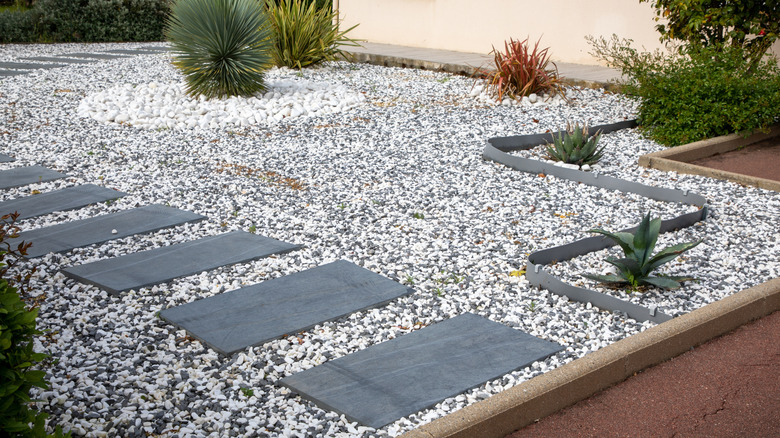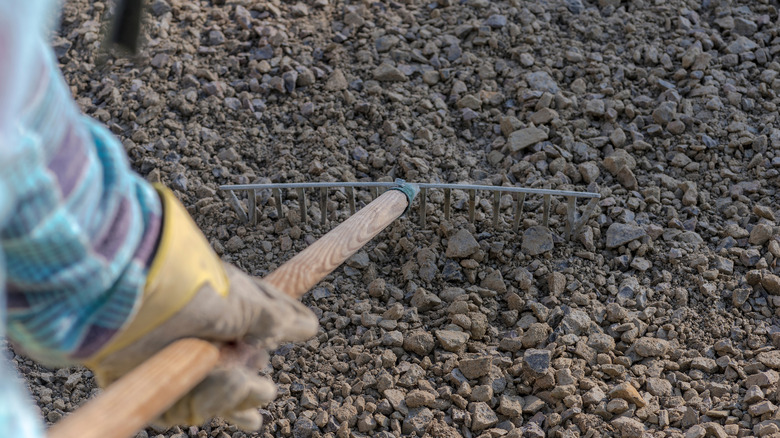Essential Tools For Laying Gravel You Can't Go Without
We may receive a commission on purchases made from links.
Although it's often difficult to shovel snow from gravel yards, gravel is enticingly cheap to install and, therefore, ideal if you want to perfect your landscape on a budget. Plus, you don't have to worry about watering, pruning, or trimming as you would with a grass lawn. However, even if the gravel itself is cheap, you might find yourself paying considerably more if you opt to have it installed by a professional. For example, you can expect to spend $25 to $55 on a cubic yard of pea gravel, which should cover about 100 square feet at a depth of 3 inches. However, you might have to pay between $85 and $500 if you hire someone else to install pea gravel on the same lawn size. It can be back-breaking, but a DIY option can help you save some cash.
This brings us to the tools you'll need, especially because borrowing everything from your grumpy next door neighbor can be difficult. To start, you'll need a sturdy shovel to move the gravel across the surface of your yard. The Truper Tru-Pro Square Point Shovel, a preferred choice for this type of work, goes for $41.41 on Amazon.
Other essential tools you'll need to lay gravel on your yard
When digging up a shallow trench to lay your gravel, there'll be clumps of soil along the edges. You'll need a spade, preferably square-edged, to scoop the soil. After digging the shallow trench, it's advisable to first put a 2-inch layer of crushed stone. This calls for a metal rake to spread the crushed stone and smooth the surface, which will also come in handy as you need to rake your gravel driveway regularly to maintain it. If you'll be edging your gravel driveway, mainly to keep them in so they don't scatter over the whole area, you'll need scissors to trim the landscape fabric, which you'll later fit in the space between the edging and the ground. You don't have scissors? No problem. Tin snips are an excellent alternative and can even be better than scissors.
When installing the plastic or metal edging, you'll need a mallet and some stakes to fasten the edging and secure it every 6 to 12 inches. Remember, the landscape fabric is in the intervening space, meaning you have to hammer down the stakes into it. By the way, some people lay the landscape fabric not just on the edges, but also on the entire surface of the dug-up trench. If you'll be doing this, a staple gun will be handy to secure the fabric along the edges at regular intervals. Finally, a wheelbarrow will be used to move your gravel from where it's heaped to the trenches you've prepared.

